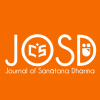What is history if it does not shape consciousness? What is mythology if it does not awaken the soul? The Rāmāyaṇa and Mahābhārata are not just epics—they are Itihāsa, lived history, pulsating with the struggles of dharma amidst chaos. The Purāṇas are not just ancient records but the unfolding of cosmic, moral, and societal order across yugas. These texts are not relics of the past; they are blueprints for civilization, revealing the eternal battle between righteousness and adharma, between the transient and the eternal.
This section of the Journal of Sanatana Dharma seeks to unravel the multiple layers of meaning within these texts—historical, allegorical, metaphysical, and ethical. What does it mean to be a Maryādā Puruṣottama like Rāma or a Yogīśvara like Kṛṣṇa? How do the Purāṇas shape civilizational memory? Are the Mahābhārata’s dilemmas still our own?
We invite contributions exploring:
- Historical and cultural context of the Rāmāyaṇa and Mahābhārata
- Comparative analyses of different recensions and regional retellings
- Ethical and philosophical frameworks of dharma, karma, and justice
- The role of women, kingship, and governance in these texts
- Paurāṇika cosmology: time cycles, avatars, and cosmic dissolution
- Archetypal symbolism and its psychological and spiritual significance
- The influence of Itihāsa and Purāṇas on Indian arts, music, and temple traditions
- Intertextuality: Connections between Upanishadic, Vedantic, and Paurāṇic thought
- Relevance of Purāṇic storytelling in contemporary discourse
- The nature of war, duty, renunciation, and mokṣa in these narratives
We welcome articles, critical essays, translations, and interpretative reflections that engage with these texts not as frozen mythologies but as dynamic, living traditions that continue to shape the dharma of individuals and societies alike.
